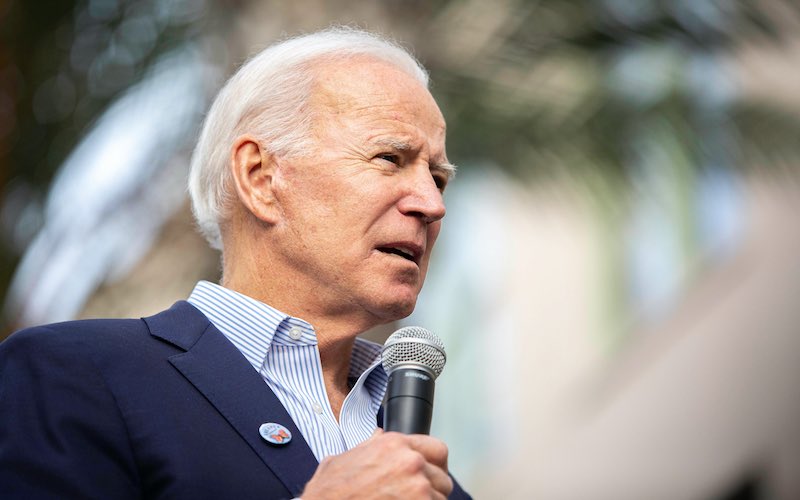
Government initiative seeks to channel federal investments into communities most affected by climate change. CLF is pushing them to improve the tool used to identify these communities. Photo: Yasamin Jafari Tehrani via Shutterstock.
For far too long, our governments have not invested in addressing the climate injustices faced by communities of color, low-income neighborhoods, and other historically disenfranchised populations. But that’s changing.
New federal and state laws and policies require government agencies to invest in environmental justice populations. The details behind these requirements must recognize the primary predictor to experience environmental burdens: race. CLF is working to ensure that government investments reach the populations who have endured the brunt of pollution and other consequences of climate change.
The Federal Government Must Direct Climate and Clean Energy Investments to Communities Most in Need
In 2021, President Biden introduced an executive order with the goal of Tackling the Climate Crisis at Home and Abroad. Through this order, he unveiled Justice40, an initiative requiring that 40% of the “overall benefits” of a variety of federal investments – in energy, water, transit, housing, workforce development, and pollution remediation – go to “disadvantaged communities.”
Justice40 holds a lot of promise. It could have a tremendous impact on advancing environmental justice and spurring economic opportunity for historically marginalized communities. But communities and advocacy groups across the country have raised many questions about how it will be implemented.
How will the government and public keep track of the investments made under Justice40? How will these investments be measured? And what will constitute an investment? And, most importantly, what criteria will federal regulators use when identifying communities to receive these benefits?
Justice40 Hopes to Provide a Government-wide Tool to Identify Disadvantaged Communities, but It Falls Short
Earlier this year, the White House Council on Environmental Quality released its Climate and Economic Justice Screening Tool (CEJST). Once final, this tool will help agencies identify the communities that should receive the benefits from these federal programs.
Those benefits include programs and investments in the areas of climate, clean energy and energy efficiency, and clean transit. Justice40 will also direct investments into affordable and sustainable housing, training and workforce development, reducing legacy pollution, and the development of clean water infrastructure. However, the criteria used in the tool fall short.
What’s the Problem?
Currently, Justice40 relies on climate, environmental, and socioeconomic indicators to identify what communities face the brunt of climate change and should benefit from the investments of the initiative. However, this tool fails to consider the primary predictor that a community will experience environmental burdens: race.
It is well-documented that communities of color, regardless of socioeconomic status, suffer disproportionately from pollution, natural disasters, and other effects of climate change. This is no coincidence but the result of centuries of environmental racism. So, leaving race out of the Justice40 equation skews the data. That is unacceptable.
What’s more, the use of non-demographic indicators by the Justice40 tool will add another layer of burden to these communities. The current criteria would require a community to experience a certain level of pollution to qualify as “disadvantaged” and benefit from these climate investments.
That’s wrong. Communities of color deserve access to environmental justice without having to bear an additional burden of proof for what research has already established.
Race matters. Ignoring this tried-and-true indicator risks further perpetuating the history and consequences of environmental racism in our communities. However, explicitly acknowledging it can help ensure that the benefits of Justice40 investments reach overburdened communities.
Only by taking into account the role of race will Black and Brown communities have the opportunity to get the long-overdue climate and transportation investments they deserve.
CLF is pushing Justice40 to acknowledge the inequities of the climate crisis on communities of color
The federal government claims that it left race out as a criterion to circumvent legal challenges to this Justice40 initiative. But that’s wrong. As there’s a compelling reason, the law allows race to be considered one of several factors in making such decisions. The inequitable access to climate benefits and the disproportionate impact of climate burdens among communities of color result from generations of racial segregation. This legacy of injustices provides more than a compelling reason to consider race in the Justice40 initiative.
That’s why CLF is pushing the federal government to improve its tool to identify communities for targeted investment. We are also joining with our community partners to develop additional recommendations for how to implement the Justice40 initiative and measure whether investments are going to targeted populations. And, we will work to hold federal agencies accountable to their promise – and duty – to invest in the communities that need it the most.
But our work doesn’t stop here. We will continue to advocate so that similar initiatives across New England move forward without ignoring the toll that climate change has taken on communities of color.




